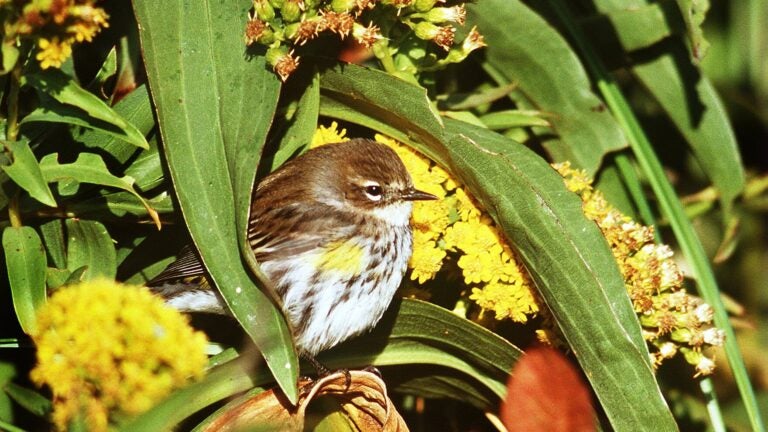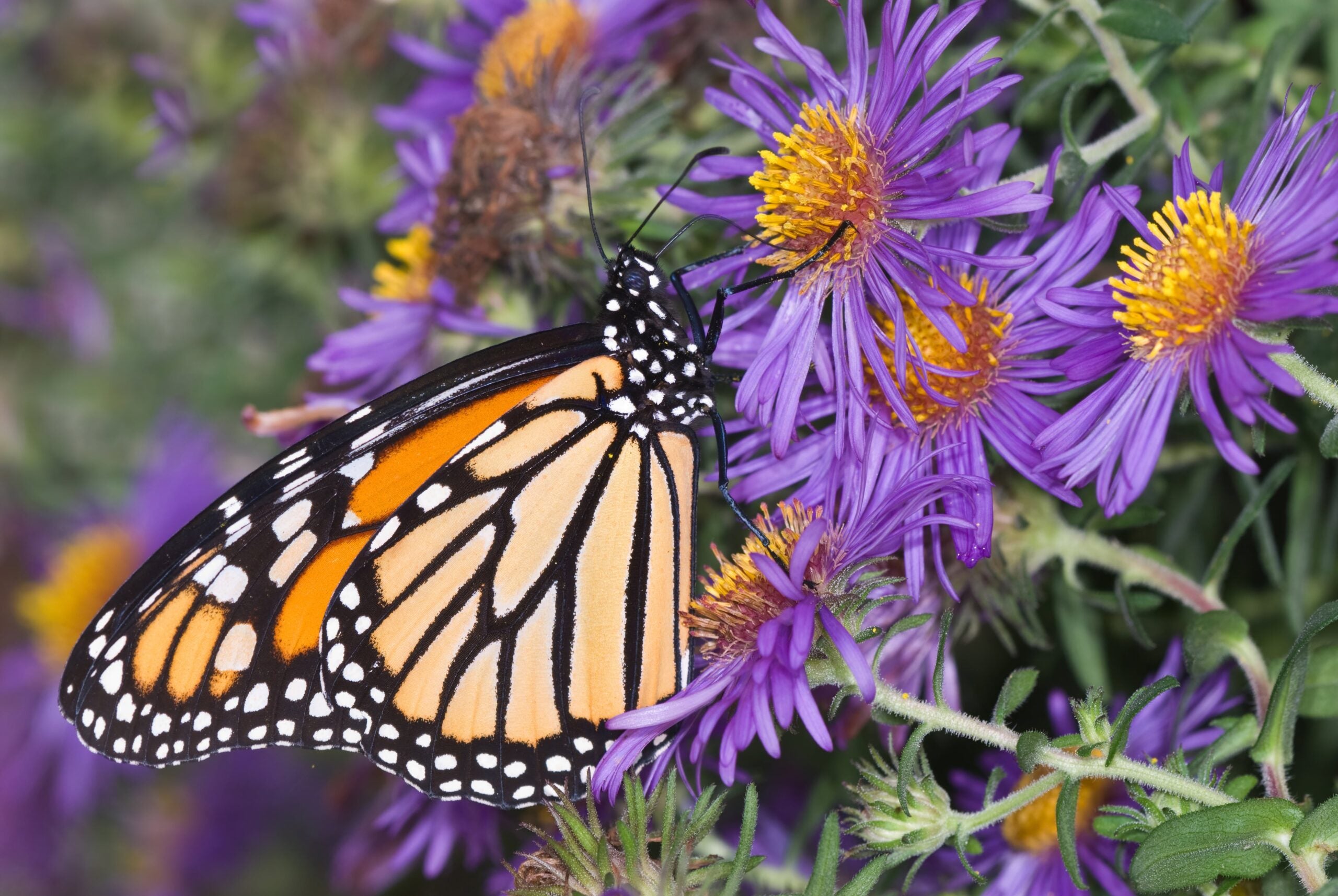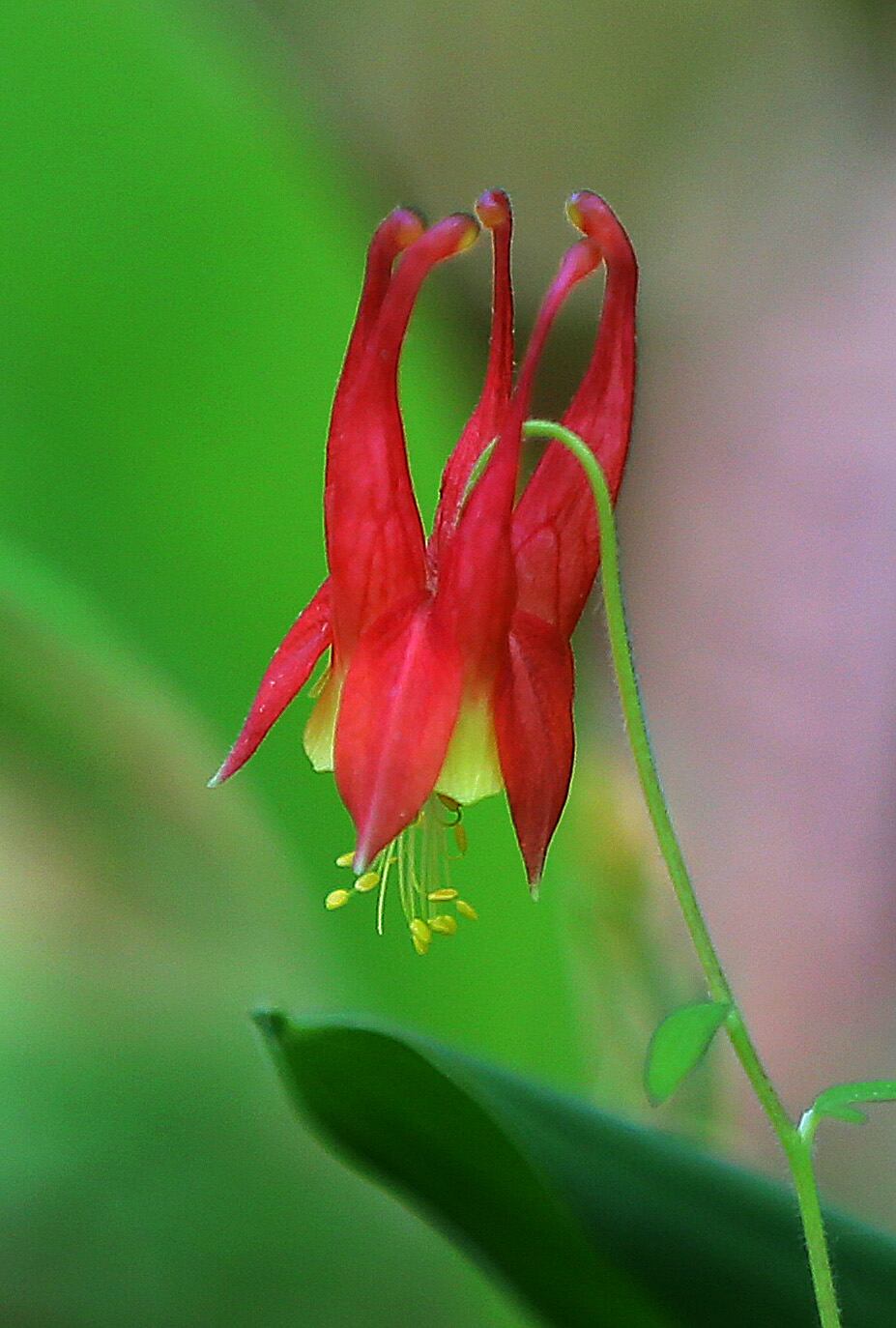Some experts say how we tend our gardens can make a difference, and maybe even influence the world.

A yellow-rumped warbler rested amid goldenrod on Nantucket Island. MARK WILSON/GLOBE STAFF FILE
At the close of “Candide,” 18th-century philosopher Voltaire suggested that we must take care of our own garden — perhaps a suggestion that our focus in the world is best trained on what’s at home. But anyone crouched over weeds knows that gardens are permeable, and in the face of record warming due to climate change, affected by the world around us.
Much of the Greater Boston area recently shifted into a warmer plant hardiness zone, reflecting higher temperatures and more extreme weather conditions. Climate progress at national and state levels faces significant hurdles in the face of cuts by the Trump administration, and a new federal spending bill that passed the House in May is poised to chop billions in climate programming. But some industry experts say how we tend our gardens can make a difference, and maybe even influence the world beyond them.
“There’s this feeling of, ‘Oh my gosh, this problem is so much bigger than I am,’” said C. Adam Schlosser, senior research scientist and deputy director at the MIT Center for Sustainability Science and Strategy. “‘Whatever I do, it can’t really help, can it?’”
But Schlosser said he disagrees: It took a collective effort to get here, and it will take one to get us out.
“My answer has always been, every little bit counts,” he said.
Home gardeners can take their clues from what some industry professionals are adopting in the face of climate change, starting by fine-tuning their carbon footprint. Increased atmospheric carbon contributes to climate warming. The garden is full of opportunities to practice carbon-neutrality.
“We obviously have a lot of technologies that are trying to remove carbon from the air, but … the best way of doing that, in terms of nature, is to plant new vegetation,” Schlosser said.
Schlosser said that heat-tolerant varieties will stand up to weather patterns and require less water.
To add a buffer against unpredictable weather extremes, create microclimates in the home landscape, said Ben Falk, a Vermont-based regenerative landscape designer and educator. That’s as simple as creating shaded areas, which can drop the temperature by 5 or 10 degrees and help to protect wildlife.
 A monarch butterfly fed on New England aster. – adobe.com
A monarch butterfly fed on New England aster. – adobe.com
Conserve water by catching rainfall in a barrel or other container. Soil health is another important consideration, Falk said. Avoid using synthetic fertilizers and pesticides that contain biocides — which are pesticides that kill microbes — and build healthy soil with compost, which supports moisture retention, microbial activity, and carbon retention. Use natural mulch, such as grass or leaf clippings, to add nutrients and drought-proofing.
While Falk said he doesn’t characterize his approach as outright resistance to climate change, adapting to it may soften its impact.
“If the wind’s blowing, you know, put up your sail,” he said. “The best responses to climate change also are the most beneficial footprint upon our ecological systems, which could have the best impact on reducing climate change simultaneously.”
Landscaping tools have long relied on gas fuel, but Mark Richardson, executive director of the Ecological Landscape Alliance based in Boylston, said the industry is waking up to the demands of climate resilience. You can replace gas-powered lawnmowers and trimmers with electric alternatives. Avoid tapping into fossil fuels by ditching chemical fertilizers and concrete products. Consider mowing lawns every other week instead of every week.
Iconic to the suburban landscape are manicured lawns and geometric hedges. But monocultures are more likely to suffer total losses when problems strike.
“The advice that I would give is to expect the unexpected,” Richardson said.
A resilient, biologically diverse garden can mix native and non-native species that overall require less maintenance. Even in tough years when not everything thrives, Richardson said, the garden isn’t decimated.
“You’re hedging your bet that when you have a diverse garden, some things will make it and other things won’t,” he said.
Plants take in carbon, a process known as carbon sequestration, as part of photosynthesis. To encourage even more of this, don’t just plant more, but plant diverse gardens full of native species. Grow Native Massachusetts defines native species as those that occurred in the region prior to European colonization. Look up native ranges of each plant: Some occur in wide ranges, while rarer ones may occur in narrower areas.
“All forms of resilience seem to rely on diversity, and that certainly goes for gardening,” Falk said.
Just as biodiversity improves carbon sequestration, its absence can drive a self-reinforcing cycle: warming climates cause species to struggle, reducing diversity, and ultimately increasing carbon output, said Evan Abramson, a pollinator-centric ecological designer based in Leyden, a tiny Massachusetts town on the border with Vermont.
“The climate crisis cannot be solved without also solving the biodiversity crisis,” Abramson said. “As we lose more species … we’re losing the ability of our landscapes and systems to stabilize the climate.”
Plant diversity can also provide physical resilience, he said. For example, a mixed meadow will be more resilient to flooding or drought than a turfgrass lawn. Seek inspiration from other areas of the state that are used to wet or dry conditions, such as coastal plains or Berkshires grasslands.
And though many ecological changes can be slow to observe, Abramson said if you plant it, pollinators will come. After just three years, his team observed an increase from two to seven insect pollinator species at one of his planting sites.
 Red columbine flowered in Norwell. – Pat Greenhouse/Globe Staff
Red columbine flowered in Norwell. – Pat Greenhouse/Globe Staff
Essentially, it’s a process of ecological restoration. Start by adding a few keystone species — such as aster and goldenrod, which support many types of wildlife — and adding other plants that attract specialists. Shrubs are another often overlooked planting that provide natural bird food and habitat. Abramson said to observe what’s there, and add what’s missing.
Turning to native plantings doesn’t have to mean ripping out your roses. Marie Chieppo, an ecological landscape designer and educator based in Sagamore Beach, recently counseled a club about how to add companion native plants, such as columbines, below their hydrangeas.
Native plants don’t always have the ostentatious flare of some annuals, but Chieppo urged gardeners to trust the process while shopping.
“When you go to a nursery and you see a bunch of native plants, they’re not probably going to be beautiful at the time … because it’s nature,” Chieppo said. “If it doesn’t bloom this year, it most certainly will next year.”
In May, the state of Massachusetts launched Growing Wild, a campaign offering free native plant kits at sites statewide. Officials said the perennial giveaway will be an annual event.
Even native plants are sold in plastic pots that end up bound for the landfill. Chieppo authored a study on the horticulture industry’s reliance on plastic and advocates for an industry shift to sustainable alternatives. Some garden centers will accept pot returns, such as Weston Nurseries and Native Plant Trust. (The Globe’s gardening expert, Ulrich Lorimer, dug into this earlier this year.)
Chieppo said that when it comes to climate resilience, the key is to rethink nature as your partner.
“Ask your landscape what it needs from you, as opposed to, ‘What do you want on your landscape?’”
Our weekly digest on buying, selling, and design, with expert advice and insider neighborhood knowledge.